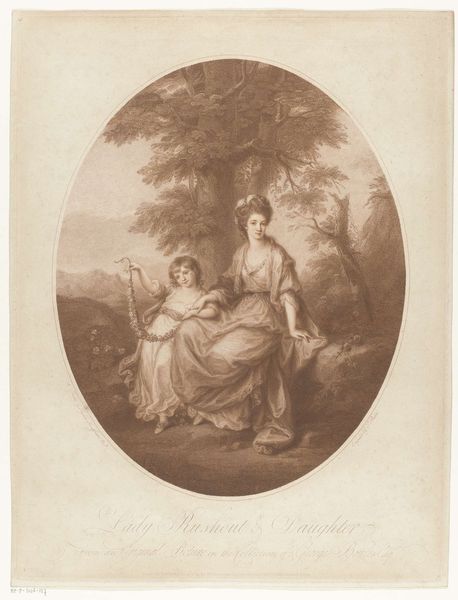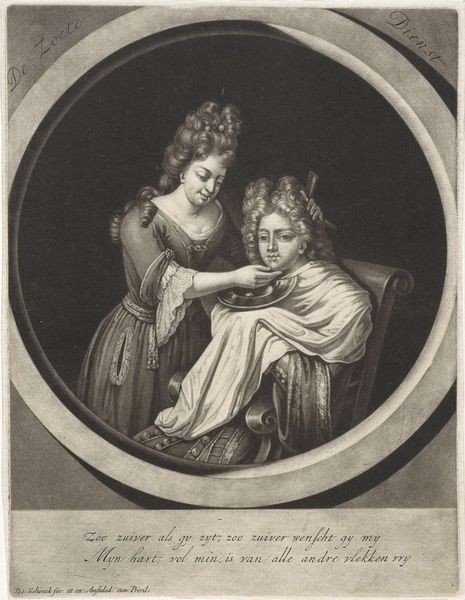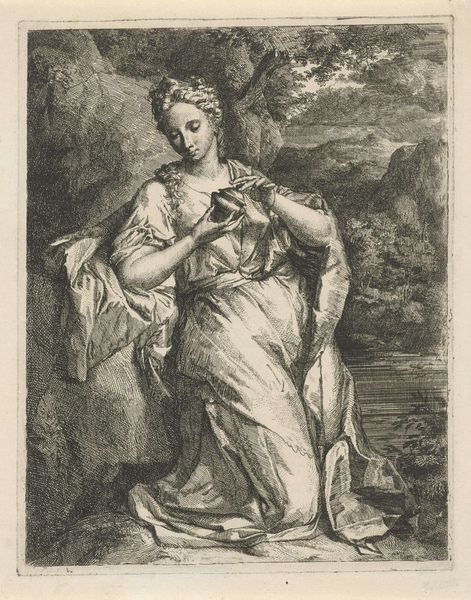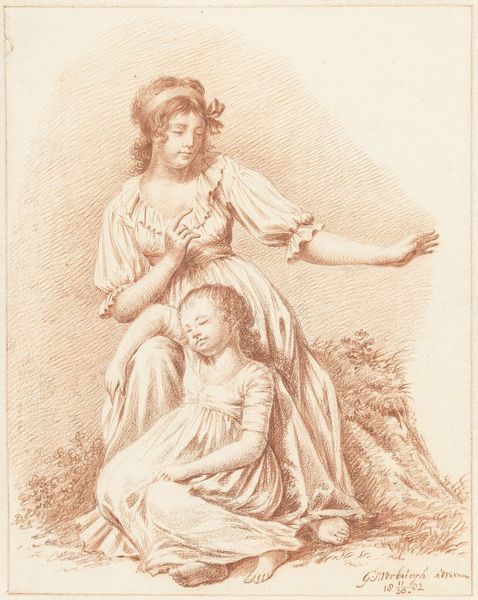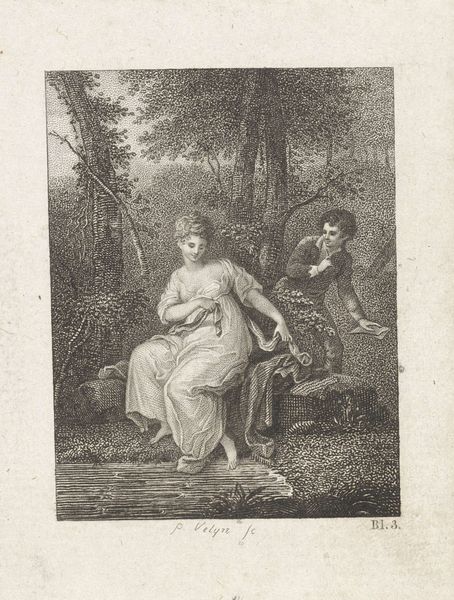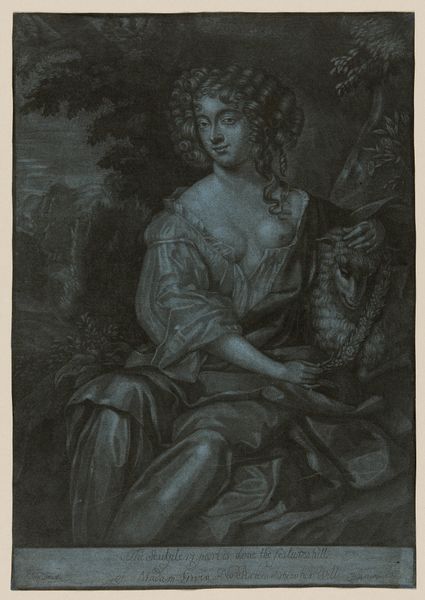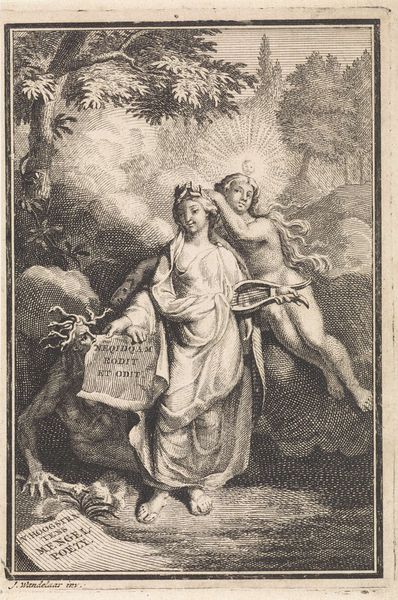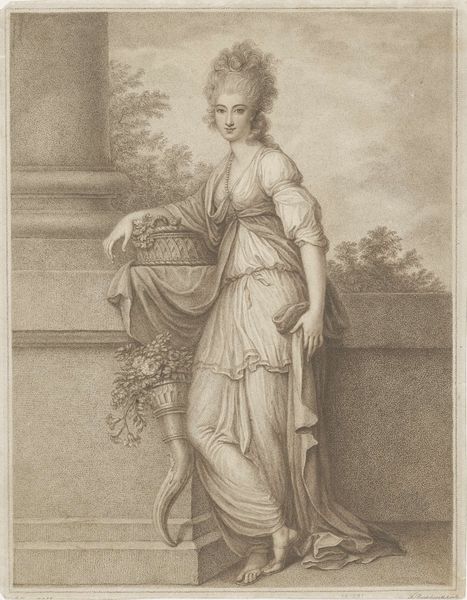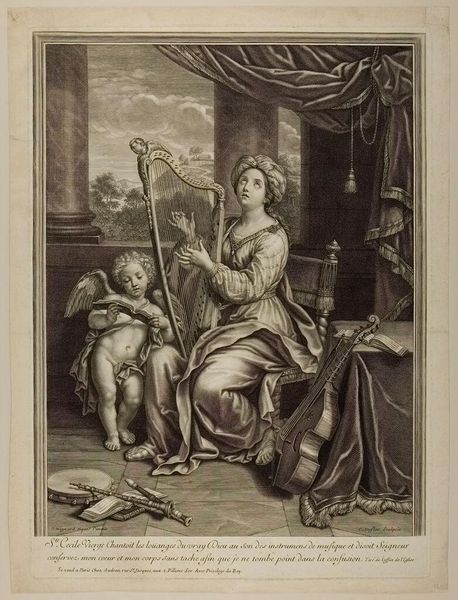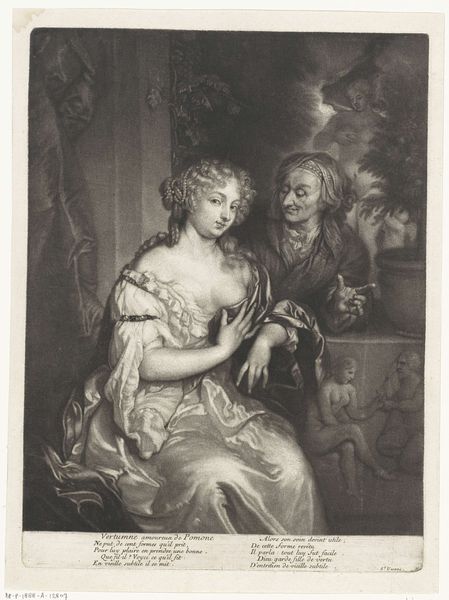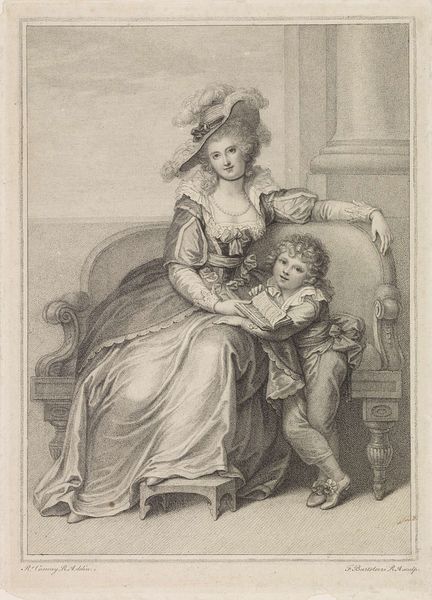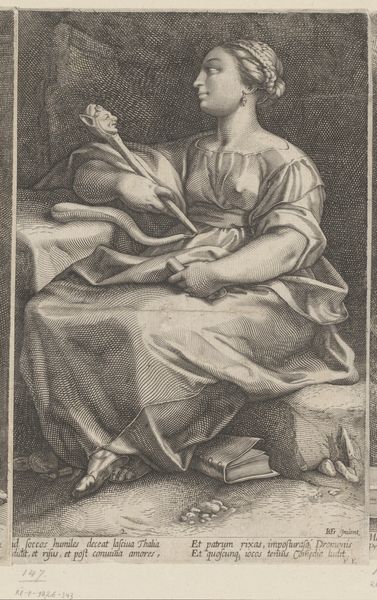
drawing, pencil
#
portrait
#
drawing
#
neoclacissism
#
oil painting
#
pencil
#
genre-painting
#
portrait art
Dimensions: height 233 mm, width 192 mm
Copyright: Rijks Museum: Open Domain
Editor: Here we have Thomas Burke’s portrait of Lady Rebecca Northwick and her daughter, Anne Rushout, from around 1780 to 1790. It’s a drawing, quite delicate. It feels very staged, very formal. What stands out to you about this piece? Curator: Ah, staged like a theatre piece, perhaps? Indeed, it does carry that air. What fascinates me is the dance between formality and intimacy. Lady Northwick presents herself with poised elegance, a representative of her station. Yet, there's a subtle tenderness in how she rests her hand on young Anne. Do you sense it? Editor: Yes, I see it! It's a sweet gesture amidst all the formality. But is there something more in their gestures? The daughter looks a little bit…disengaged. Curator: Precisely! A perceptive eye you have. Look at the garland, almost an offering, and yet the girl's gaze seems to drift elsewhere. This piece is made during the neo-classical era: do you see how the garments loosely draw the classic idealized forms of ancient sculpture? The picture then makes me reflect: are we observing a mother presenting her daughter to society, whilst the daughter longs for a freedom the garland itself suggests? I might be entirely off, but that's the delightful thing about art, isn’t it? Editor: I like your perspective. The garland as a symbol of freedom... I hadn’t considered that. Curator: Well, in art, as in life, it’s the unseen garlands, the untold stories, that often captivate the most. Editor: Definitely. It makes you think beyond just a pretty picture, doesn’t it? Thanks for the insight!
Comments
No comments
Be the first to comment and join the conversation on the ultimate creative platform.
